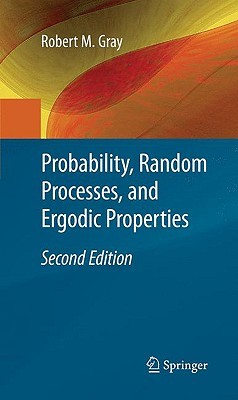
- We will send in 10–14 business days.
- Author: Robert M Gray
- Publisher: Springer
- Year: 2009
- Pages: 322
- ISBN-10: 1441910891
- ISBN-13: 9781441910899
- Format: 15.6 x 23.4 x 2.1 cm, kieti viršeliai
- Language: English
- SAVE -10% with code: EXTRA
Probability, Random Processes, and Ergodic Properties (e-book) (used book) | bookbook.eu
Reviews
Description
Probability, Random Processes, and Ergodic Properties is for mathematically inclined information/communication theorists and people working in signal processing. It will also interest those working with random or stochastic processes, including mathematicians, statisticians, and economists.
Highlights:
Complete tour of book and guidelines for use given in Introduction, so readers can see at a glance the topics of interest.
Structures mathematics for an engineering audience, with emphasis on engineering applications.
New in the Second Edition:
Much of the material has been rearranged and revised for pedagogical reasons.
The original first chapter has been split in order to allow a more thorough treatment of basic probability before tackling random processes and dynamical systems.
The final chapter has been broken into two pieces to provide separate emphasis on process metrics and the ergodic decomposition of affine functionals.
Many classic inequalities are now incorporated into the text, along with proofs; and many citations have been added.
EXTRA 10 % discount with code: EXTRA
The promotion ends in 23d.07:59:04
The discount code is valid when purchasing from 10 €. Discounts do not stack.
- Author: Robert M Gray
- Publisher: Springer
- Year: 2009
- Pages: 322
- ISBN-10: 1441910891
- ISBN-13: 9781441910899
- Format: 15.6 x 23.4 x 2.1 cm, kieti viršeliai
- Language: English English
Probability, Random Processes, and Ergodic Properties is for mathematically inclined information/communication theorists and people working in signal processing. It will also interest those working with random or stochastic processes, including mathematicians, statisticians, and economists.
Highlights:
Complete tour of book and guidelines for use given in Introduction, so readers can see at a glance the topics of interest.
Structures mathematics for an engineering audience, with emphasis on engineering applications.
New in the Second Edition:
Much of the material has been rearranged and revised for pedagogical reasons.
The original first chapter has been split in order to allow a more thorough treatment of basic probability before tackling random processes and dynamical systems.
The final chapter has been broken into two pieces to provide separate emphasis on process metrics and the ergodic decomposition of affine functionals.
Many classic inequalities are now incorporated into the text, along with proofs; and many citations have been added.


Reviews